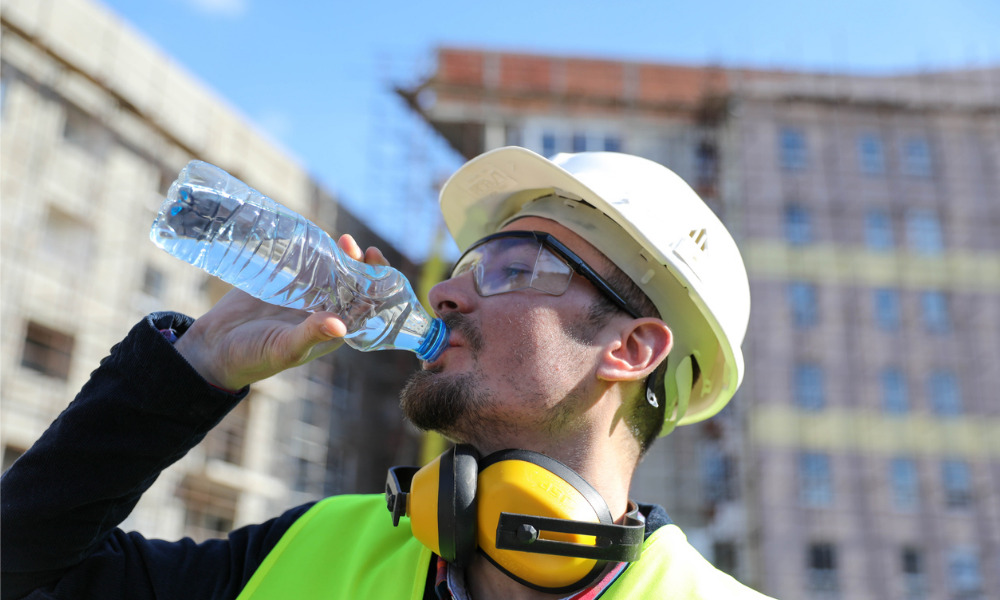Heat stress, dehydration among big risks

Each season carries with it its own set of health and safety hazards. Extreme heat conditions are certainly a concern, but there are other risks that crop up during the summer months that employers and safety professionals need to be aware of. Here are a few, along with ways in which workplaces can ensure optimal worker safety.
Stay hydrated. While this may seem obvious, a reminder will never go amiss. Especially for those working outside (e.g. on worksites, in parks or golf courses, etc.) and doing strenuous work, there is a real risk of dehydration. Workers should be encouraged to bring in their own water bottles or be provided with one, as well as easy and frequent access to drinkable water. Employers and safety officers can also put into place specific breaks in case workers may not have access to their bottles during their tasks (e.g. those working at heights). In addition, it is always useful to put signage around the workplace (at work stations, in break areas) to remind people to stay hydrated.
Keep in mind best practices to prevent heat stress. This ties in directly with the first point. Workers in a variety of outdoor and indoor settings (such as bakeries or steel mills) are at risk of heat-related health issues such as heat stress or even heat stroke. Workers need to be educated on the signs and symptoms of heat stress. Before the warmer months, safety officers may want to organize a quick course or send around relevant documentation. For those who may be working outside, employers and OHS pros have to make sure that workers have shade and water during breaks – and maybe even suspend or amend work if temperatures get too high.
Remind workers to wear their PPE. During the summer months, workers may be less inclined to wear protective equipment or clothing because they may find it too heavy or too uncomfortable. They may feel over-heated or too sweaty, leading them to omit PPE altogether. This is obviously incredibly dangerous, and something which safety officers need to look out for. As with staying hydrated, you can post signage around the workplace as a reminder, and also remind workers during morning toolbox meetings. And if there is a real problem with equipment being maladapted for warmer conditions, this is perhaps a sign to look into more appropriate clothing or equipment.
Stay clear of ticks. Those working outside, notably in parks or forests, may be at risk of tick bites. Ticks are especially prevalent around August, and tick bites can cause serious health issues such as Lyme Disease. Workers need to be educated on the signs of a tick bite, how to properly check and remove ticks, and also wear the correct gear to avoid increasing the risk of tick bites (e.g. wearing long sleeves, long trousers in a light colour to cover limbs and be able to more clearly see ticks).
Drive responsibly. Whether at home or at work, people are more frequently in vehicles during the summer. Roads can get packed with people going on holiday, and lots of road work is typically done during the summer. Drivers need to be extra vigilant to ensure that they are not putting themselves or others at risk. Employers and safety officers may want to put into place a refresher course on driving safety before the warmer months.





